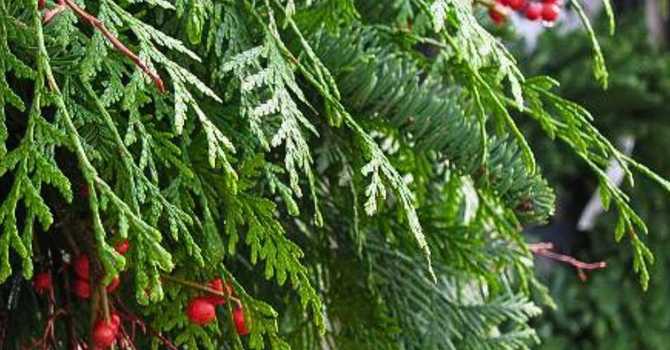
Birds appreciate a little assistance with food,
shelter, and even water through the colder months, and it’s a treat to watch them flit about the garden on those cold grey days. Here are a few suggestions of what you can do to help them out!
The cold is coming
The dusting of snow now on the mountains is a good reminder that cold days are coming, and it’s time to help out some of our best garden friends, the birds! Hanging a feeder in the yard and filling it with whatever bird seed you find is a nice gesture, but we can do better. If you are serious about attracting birds to your garden– there is a lot more to it, but the time and effort will bring many rewards (and not just to the birds)!
Info on books
Many fine books are available on the subject of attracting and feeding birds, and there is fairly reliable information on the internet, too. This information will give you a broader perspective on the value of having birds around your home and some of their special needs.
Keep it clean
Cleanliness and consistency are two of the most important necessities of a feeding station. Mouldy, spoiled food can be dangerous to birds, and excess food spilled on the ground will attract rodents. Keep your feeders clean all year round, and only put out enough food to last a few days, then refill. It is also a good idea to rake the ground below the feeder and to clean up any spilled food. Birds will not stay in one area if their food service is not consistent. Year-round feeding is a great idea, but even if you only do it during the winter months, don’t allow the feeder to be empty for days at a time, especially during cold spells.
![]()
![]()
Some options to go with
Aswell as setting out food, a garden planted with certain varieties of trees and shrubs will also provide additional and consistent food sources over the winter. Generally, native species of plants are preferred by overwintering birds, but the following trees, shrubs, and perennials are all good options to provide winter food and/or shelter. Berried plants that fruit, like pyracantha, cotoneaster, and ornamental flowering crabapples, are a great source of winter food, as is English holly and deciduous Ilex verticillata. The seed pods of alder and certain dogwoods, like ‘Red Osier,’ and even winter-flowering Cornus mas, offer a good supply of food. Believe it or not, the cones from mugo and Scotch pines, spruce and hemlock are food sources too. Rose hips, particularly from some of the old-fashioned roses, and the new Meidilands, like ‘Bonica,’ are a real treat for birds. Additional plants that provide valuable food or shelter for birds include:
Trees
Black Hawthorn, Sitka Mountain Ash, Thuja occidentalis, Blue Spruce (Picea pungens), Hemlock
Shrubs
Saskatoon Berry, Nootka Rose, Red Elderberry, Thimbleberry (Rubus parviflorus), Mahonia aquifolium and nervosa, Shrubby Dogwoods (Cornus species), Cranberry (Viburnum trilobum), Callicarpa, Barberry (Berberis), Boxwood, Sumac, Red and Black chokeberry, Serviceberry, Kinnikinnick
Vines
Bittersweet (Celastrus)
For purchase
As for purchased birdseed, the cheapest is seldom the best, and if the birds just pick through it and scatter most of it uneaten to the ground, it is not much of a bargain. Although there is no question that certain species prefer special seed types, the blend generally attractive to most wild birds is black oil sunflower seed and white millet. It’s interesting that most species have little desire for buckwheat, flax, oats, riceseed, and wheat. If you are going to purchase seed, you might as well get the stuff they eat. The small, fine nyjer thistle bird seed is one of the best for attracting smaller birds, but be sure to use a feeder that will keep the seed from spilling out too easily.
![]()
![]()
Tips in cold weather
During cold weather, birds need high energy food, and suet is among the best and you can find some tasty mixes that include seed and fruits to keep them coming back for more. Don’t forget that birds have no teeth. Instead, they rely on fine particles of grit in their gizzards to grind up hard seeds. You can buy grit, but coarse sand will do fine. Just scatter some on your feeder.
Water!
Birds need a consistent source of water too, and if you can keep an open source of water near your feeder you will attract more than your share of birds! If you have a birdbath that quickly freezes up, you may want to purchase a birdbath heater, or just be sure to set out clean, fresh water each morning. Remember to keep your water bath clean throughout the season, too; wash them thoroughly when you’re cleaning your feeders.
Protect their dinner
Remember to secure your feeder in a location out of cold winter winds to protect the birds while they are dining. It is also a good idea to locate feeders near thickets, or bushy trees where they can dart quickly should a predator suddenly appear, and avoid placing feeders near reflective windows that they might fly into. If you haven’t done so before, try setting up a bird feeding station for the winter. Remember that various species feed at different height levels, so use ground feeders, six-foot-high feeders as well as ten to twelve foot high feeders to attract the largest number of birds.
Entertainment in your backyard
By intermingling feeders with a variety of plants that provide food and shelter over the cooler months of the year, you’ll be helping to keep our feathered friends healthy and well-fed. They’re also fascinating to watch and provide great backyard entertainment! On that note, bird feeders, birdseed, suet, attractive water baths, and stands all make wonderful gifts (hummingbird feeders and nectar too!), particularly for folks who may be spending more time indoors over the next few months.


